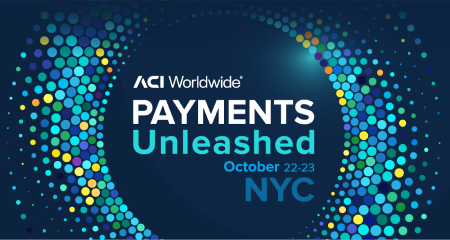- ACI will be convening our third Coding for Girls camp this weekend; what do you think is different today from last year in terms of opportunities for girls to get involved in coding? Have there been any noticeable changes since last year?
Deepak Khazanchi: Making sure everyone feels that they have a place in the IT landscape is a priority for our college. We launched the Women in IT Initiatives nearly five years ago and we are already seeing promising results, particularly with regards to our CodeCrush Immersion Experience for 8th and 9th grade girls. We’re looking forward to our CodeCrush Summer Summit on July 25-26. There is indeed a renaissance in the interest of young girls in iSTEM, but a lot more needs to be done—and done well.
Shelley Ahlers: There is certainly an increased awareness around the gender gap in STEM, not only with parents, but also within the educational system and among technology companies, including ACI. This increased awareness is creating even more opportunities for girls interested in coding. Girls also have more information available to them online than ever before—and based on the high attendance rates at ACI’s Coding for Girls Camps, many of them are taking advantage of what’s out there and already have an impressive base level of knowledge when they start camp.
- What else can girls do to get involved in STEM?
DK: Nearly 250 girls and their teachers have participated in our CodeCrush program since its inception four years ago—and as a result, over 1/3 of eligible students from our first class chose to continue their STEM studies with programs at UNO. Nearly 45% of the girls applying to our program are from rural towns and a similar number report participating in reduced lunch programs. We believe that our efforts are on the cusp of making a major impact on the number of girls seeking IT-oriented academic degrees. One of the reasons our programs are highly successful is because we offer IT programs that go beyond the traditional “coding” mindset. Participants learn about an array of IT topics including, bioinformatics, IT innovation, information management, mobile apps, UI design, robotics, 3D modeling and printing—and much more.
SA: The most important thing I share with young girls and their parents is to take a STEM-weighted curriculum as early as possible in middle school and high school, so their options aren’t limited before they even get to college. I’m also a strong believer in part-time employment for high-school students, as it is a great avenue to develop new interests and skills—and most importantly, for girls to see first-hand what is possible. My decision to pursue Computer Science as a college major was based on a terrific experience at a part-time job at a Payments & Technology company my senior year of high school.
- What are some related challenges and opportunities that you are seeing related to women launching STEM-related careers?
DK: Although we’ve made great strides in the past few years, some challenges for women in STEM include the lack of exposure to the diversity and variety of the IT profession and academic discipline. In addition, girls need to have role models and champions in their own schools; this means educating teachers and counselors about the range of IT careers and the potential for girls to succeed in them—without pigeon-holing them into specific areas early in their academic life. Finally, the IT workforce deficit is a national problem and having more women in the IT field is an imperative, especially given that 51% of all college students are women and 54% of the current workforce is comprised of women.
SA: We need to provide girls with a broader perspective on what a STEM-related career can really mean, not only from a career progression perspective, but also a lifestyle perspective, including financial benefits and flexible work arrangements. A combination of a STEM and business curriculum provides optimal career opportunity, flexibility and sustainability for girls and women preparing for a long-term career in the global economy.
- Solutions
- Banking
-
- ACI ConneticUnified cloud payments platform
- AcquiringDigital acceptance, merchant management
- IssuingDigital payments and accounts issuing
- Fraud managementReal-time enterprise fraud management
- RTGS / Wires and cross-borderMulti-bank, multi-currency processing
- Real-time, instant paymentsComplete real-time payments processing
- ATMsSelf-service, omnichannel digital experience
- Central infrastructureInnovative real-time payment infrastructure
- NEW Redefining the payments hub: Solving today’s banking payment challenges
-
- Merchant payments
- ACI Payments Orchestration PlatformEnable customer journeys across commerce channels, accept payments, prevent fraud and optimize your payments journey
- In-storeDynamic, modern in-store payments
- eCommerceOnline and mobile payments
- Alternative payment methodsGive more ways to pay
- Value-added servicesEngagement, optimization and reporting
- Fraud managementEnd-to-end fraud orchestration
- Risk, security, and complianceAchieve and maintain compliance
- NEW Datos names ACI Worldwide best-in-class in payments orchestration
- Industries we serve
- Billing and bill payments
- ACI SpeedpayDrive customer satisfaction with the widest range of bill pay options in the industry.
- Bill payment APIs and SDKsOutsource bill payment processing
- Fraud managementAI-based fraud orchestration technology
- Alternative payment methodsGive more ways to pay
- Loan servicingPreferred loan payment options
- Treasury managementStreamline and integrate your back office
- Automated debt collectionImprove your collections process
- Digital walletsManage digital cards and payments
- PCI compliance and securityAchieve and maintain PCI compliance
- Industries We Serve
- Fraud management and payments intelligence
- Fraud managementFraud solutions to minimize risk and prevent fraud
- Fraud management for bankingEnterprise-wide fraud prevention
- Anti-money launderingStay ahead of money-laundering schemes
- Robotic process automationAutomate payment processing operations
- Fraud management in the cloudProtecting your business in the cloud
- Fraud management for merchantsProtect payments from end to end
- ChargebacksPrevent chargebacks before they happen
- SCA complianceAchieve and maintain SCA compliance
- Digital identity solutionsConfirm identities with behavioral analytics
- NEW Scamscope fraud report: APP scam trends from around the globe
CompanyCustomersPartners




